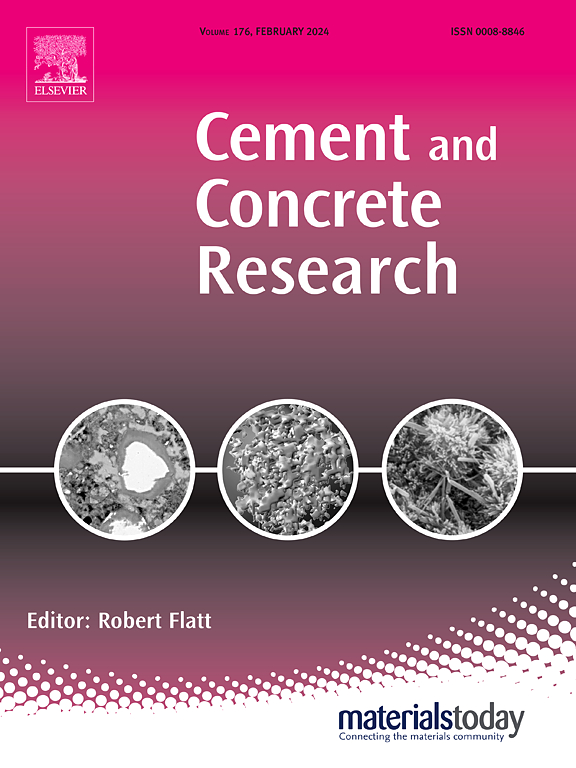A reactive-transport framework to model carbonation performance of a hardened cement: the case of alkali-sulfate slag cement pastes
IF 13.1
1区 工程技术
Q1 CONSTRUCTION & BUILDING TECHNOLOGY
引用次数: 0
Abstract
This study introduces a novel reactive transport framework tailored for hardened cementitious materials, applied to a clinker-free sodium sulfate-activated slag cement as a case study. The modelling tool enables the prediction of CO2-induced alterations in the phase assemblage, transport properties (e.g. diffusivity, permeability, saturation, liquid volume fraction, and capillary pressure) in cementitious materials, pore solution pH, the composition of aluminium-substituted calcium silicate hydrate gel (C-A-S-H), and CO2 sequestration profiles as a function of cover depth. The framework was applied to simulate one year of accelerated carbonation (1 % CO2 v/v) and ten years of natural carbonation (0.04 % CO2 v/v) under controlled temperature and humidity conditions, showing excellent alignment with experimental data. This framework represents a significant step forward in the state-of-the-art for predicting carbonation performance of cementitious materials, enabling calculation and estimation of CO2 uptake capacity of cement systems, including those containing supplementary cementitious materials (SCMs) or based on alkali-activated binders.
一个反应输运框架来模拟硬化水泥的碳化性能:碱-硫酸盐矿渣水泥膏体的情况
本研究介绍了一种为硬化胶凝材料量身定制的新型反应输运框架,并将其应用于无熟料硫酸钠活化矿渣水泥中作为案例研究。该建模工具能够预测二氧化碳引起的胶凝材料的相组合变化、输运性质(如扩散系数、渗透率、饱和度、液体体积分数和毛细管压力)、孔隙溶液pH、铝取代硅酸钙水合物凝胶(C-A-S-H)的组成,以及作为覆盖深度函数的二氧化碳封存剖面。应用该框架模拟了1年的加速碳化(1% CO2 v/v)和10年的自然碳化(0.04% CO2 v/v),在控制温度和湿度的条件下,与实验数据非常吻合。该框架在预测胶凝材料碳化性能方面迈出了重要的一步,能够计算和估计水泥系统的二氧化碳吸收能力,包括那些含有补充胶凝材料(scm)或基于碱活化粘合剂的水泥系统。
本文章由计算机程序翻译,如有差异,请以英文原文为准。
求助全文
约1分钟内获得全文
求助全文
来源期刊

Cement and Concrete Research
工程技术-材料科学:综合
CiteScore
20.90
自引率
12.30%
发文量
318
审稿时长
53 days
期刊介绍:
Cement and Concrete Research is dedicated to publishing top-notch research on the materials science and engineering of cement, cement composites, mortars, concrete, and related materials incorporating cement or other mineral binders. The journal prioritizes reporting significant findings in research on the properties and performance of cementitious materials. It also covers novel experimental techniques, the latest analytical and modeling methods, examination and diagnosis of actual cement and concrete structures, and the exploration of potential improvements in materials.
 求助内容:
求助内容: 应助结果提醒方式:
应助结果提醒方式:


